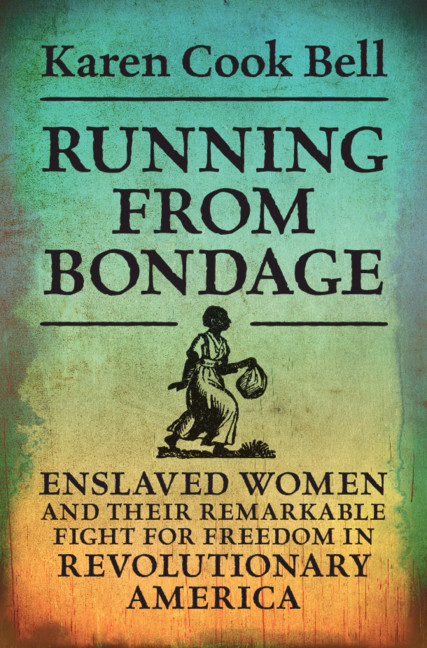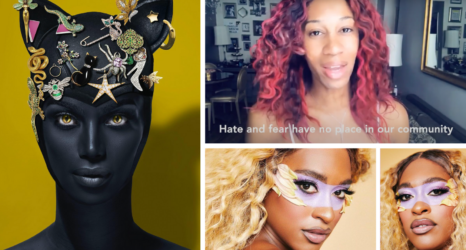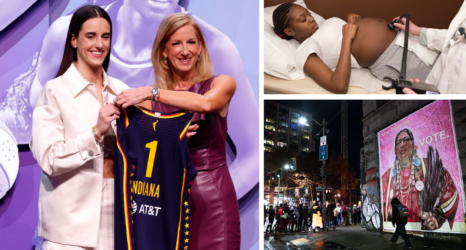The following is an excerpt from Chapter 5 of Running from Bondage: Enslaved Women and Their Remarkable Fight for Freedom in Revolutionary America by Karen Cook Bell, which tells the compelling stories of enslaved women, who comprised one-third of all runaways, and the ways in which they fled or attempted to flee bondage during and after the Revolutionary War
After the Revolutionary War, Captain Lewis and Captain Sharper (also known as Captain Cudjoe) led a band of maroons to an encampment near the Savannah River. The group included several women who were either wives of the men or who fled alone seeking refuge from slavery.
Among the women were Juliet and Peggy, who would later testify at the trial of Captain Lewis. The group supported itself by growing its own foodstuffs and raiding outlying plantations. It is likely that the band formed during the Revolutionary War, when Georgia and South Carolina were still under full British control and runaways gathered on Tybee Island (in the mouth of the Savannah River) by the hundreds.
Given the chaotic situation in the Lowcountry after the departure of the British, with tens of thousands of displaced enslaved women and men and numerous disputes over ownership, it is not surprising that rather than return to slavery, some women and men chose to take advantage of the situation and make their homes in the Savannah River swamps.
The Revolutionary War not only prompted an increase in the number of runaways, but also provided the impetus for marronage.
The term “maroon” is an English corruption of the word cimarron which means “wild, not tame,” and was originally applied to livestock that had escaped from farms to roam free in the woods. The English adapted the term “maroon” and used it, along with the French and Dutch, to refer to fugitive slaves. Maroons were fugitives from slavery who established independent communities in swamps, deep woods, mountains, isolated islands and other wilderness sanctuaries. They defended their territory from enslavers, built villages, produced crops, raised children, and from time to time staged raids into slavery country to free persons still held in bondage. Fugitive women’s active engagement with maroon societies in the Great Dismal Swamp and in South Carolina, Georgia, Louisiana and Florida illustrates their tenacity and staunch pursuit of freedom.
Sally, a Georgia fugitive woman, and her “two mulatto children” escaped in May 1764 a few days after they were bought. Their former enslaver had died, and they had been auctioned off to Alexander Wylly, a justice of the peace in Christ Church Parish in Savannah. According to Wylly, the family had “run away into the woods,” and he was so anxious to get them back that he placed 22 ads for their return. Ten months after they had escaped, Sally and her two children were still at large and were believed to have gone to Florida.
In 1771, Nathaniel Burwell reported that Jack and Venus both fled the morass of the Dismal Swamp. Venus, who was “thirty-two years old, five Feet four Inches high, stout made, [and] very smooth tongued,” worked in the Dismal Swamp for two years and both she and Jack “carried with them several different Kinds of Apparel.” Jack, also known as Jack Dismal, remained on the run as late as 1773, when his enslaver, Robert Burrell, placed an additional ad for his return. The pair was at large in July 1778, when Mary Burwell placed an ad for their capture and return, along with two other women, Zeny and her daughter Nelly.
The Revolutionary War inspired fugitive women to remain at large in maroon camps after the war. Fatima and Hannah, along with several others, joined a maroon colony on Belleisle Island in Lowcountry, Georgia, after being transported to Florida to labor on plantations and subsequently sold to South Carolina planter Godin Guerard in 1785. Sixteen people escaped on May 1, 1785 from Guerard’s plantation, including seven women and three children ranging in age from 18 months to eight years.
Throughout Louisiana, enslaved women and men fled into the swamps and bayous bordering plantations on the Mississippi River. Three fugitive women—Maria Juana, Margarita and Nancy—were part of a maroon camp established in the borderlands of Mr. Raguet’s plantation at Cane’s Bayou in 1781. The maroon camp consisted of twenty-one persons from fifteen plantations, and women represented a quarter of the community.
Black women’s marronage throughout the South reveals much about slave resistance during the Age of Revolution, which inspired profound and rapid intellectual, social and political change. Enslaved and free people of color played a pivotal role in this early period of abolitionism. They shared in the collective stream of hope at the profound change that was occurring, and they orchestrated an unprecedented series of escapes that resulted in the first large-scale rebellion (through flight) of enslaved women and men in the mainland colonies and states. Although their desire for freedom did not originate with the American Revolution, the Revolution intensified it.
Despite facing tremendous challenges during and after the Revolution, fugitive women in maroon societies made freedom moves into spaces of their own. Their own interests and concerns for their families prompted a declaration of independence in the swamps and woods of Virginia, North Carolina, Louisiana, South Carolina, Georgia and Florida. A sense of self-identity, forged in the Colonial period and strengthened by the Revolutionary War, imbued them with a sense of community and cooperative effort. Enslaved women who escaped to join maroon communities unabashedly claimed the liberty denied to them and fundamentally transformed their lived experience.
You may also like:






